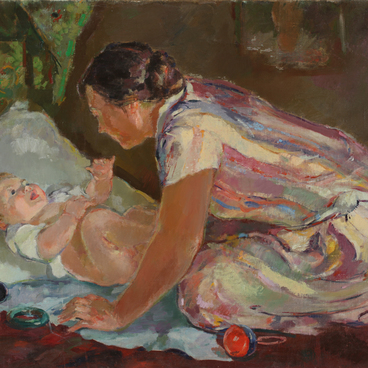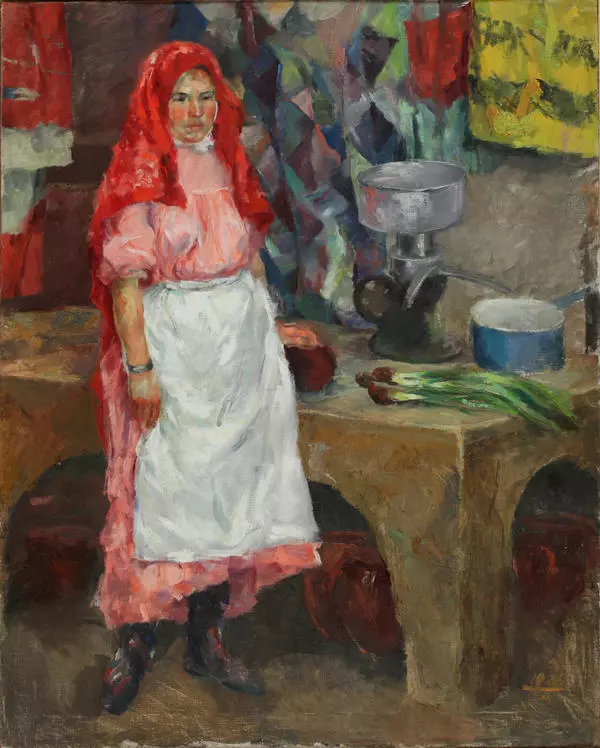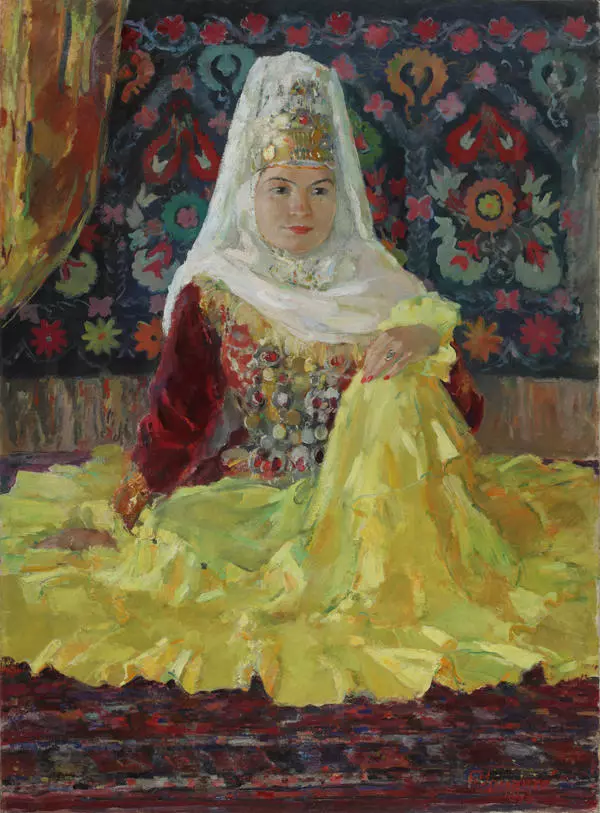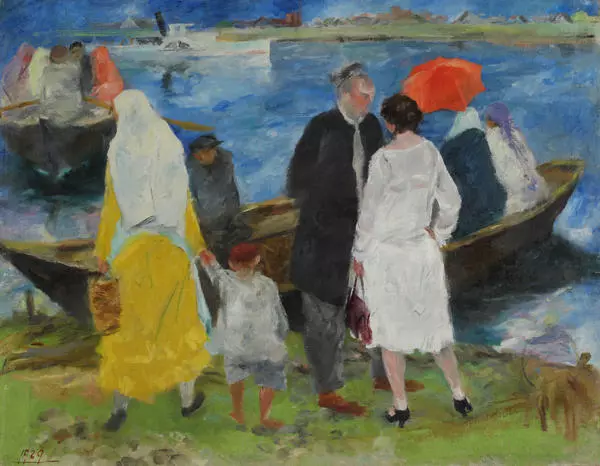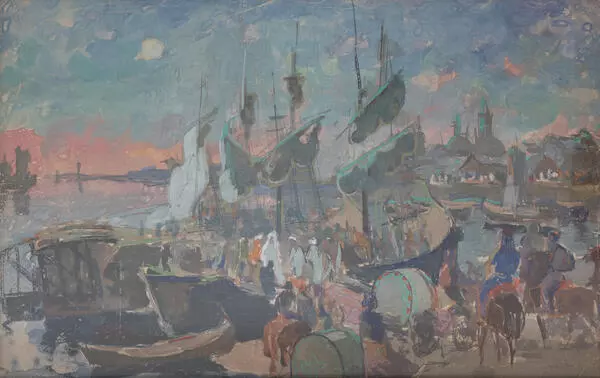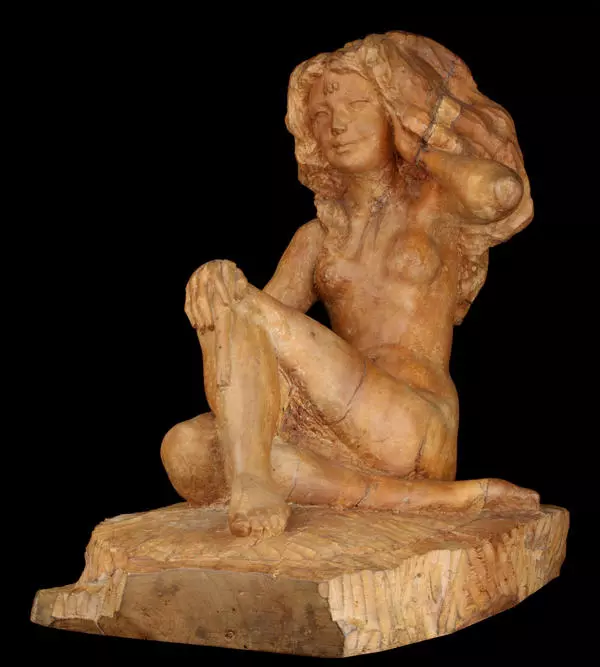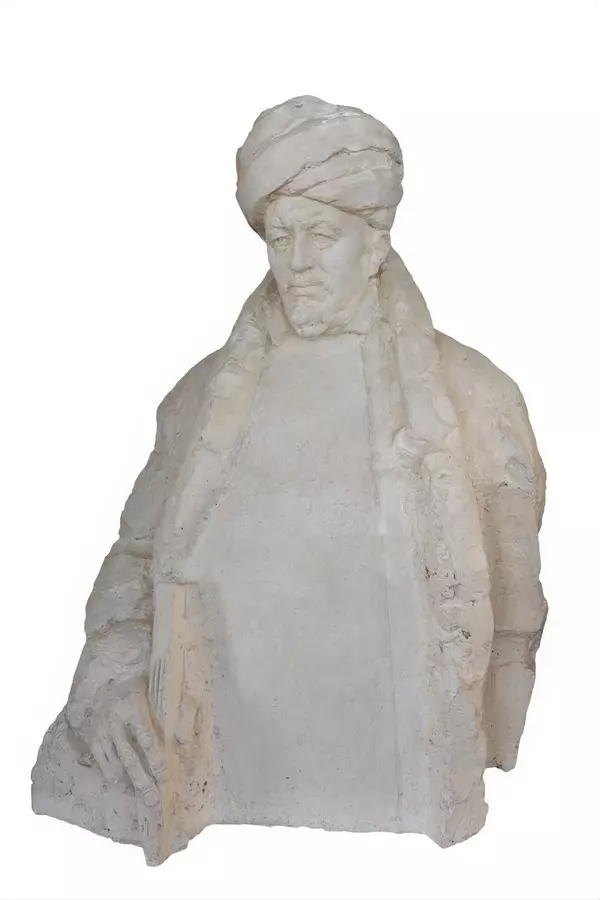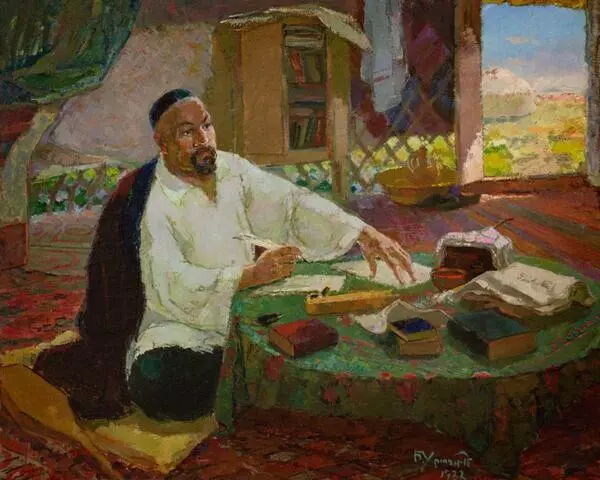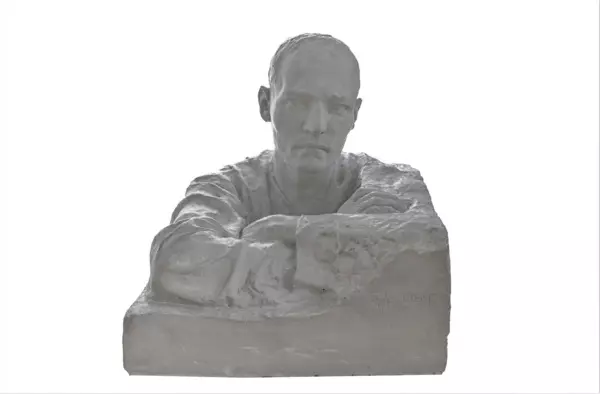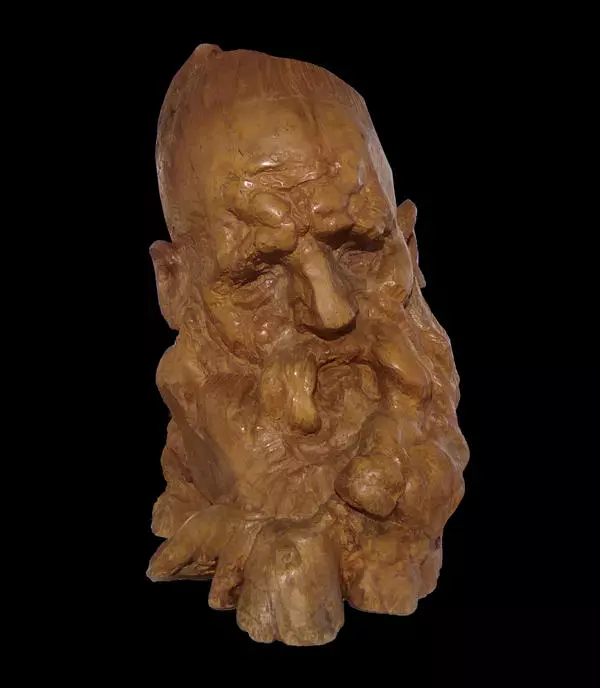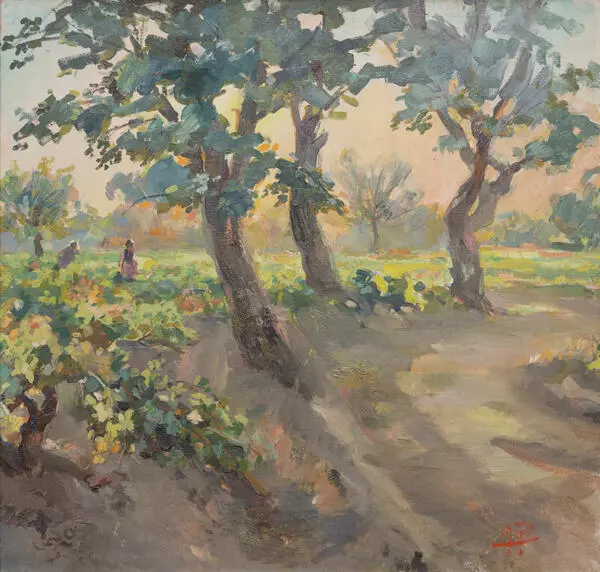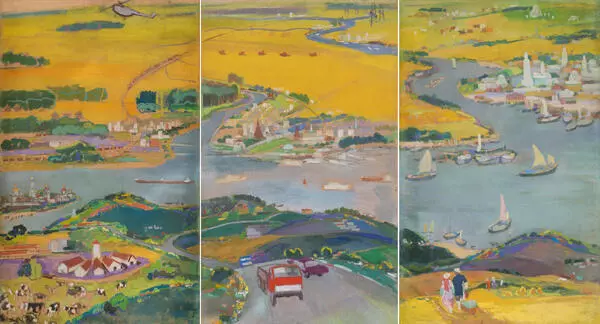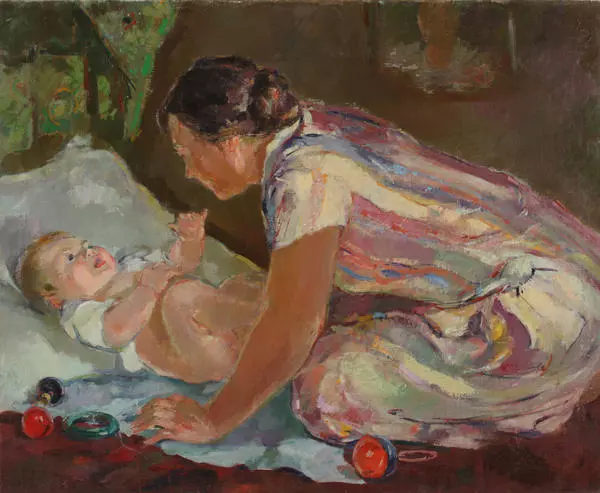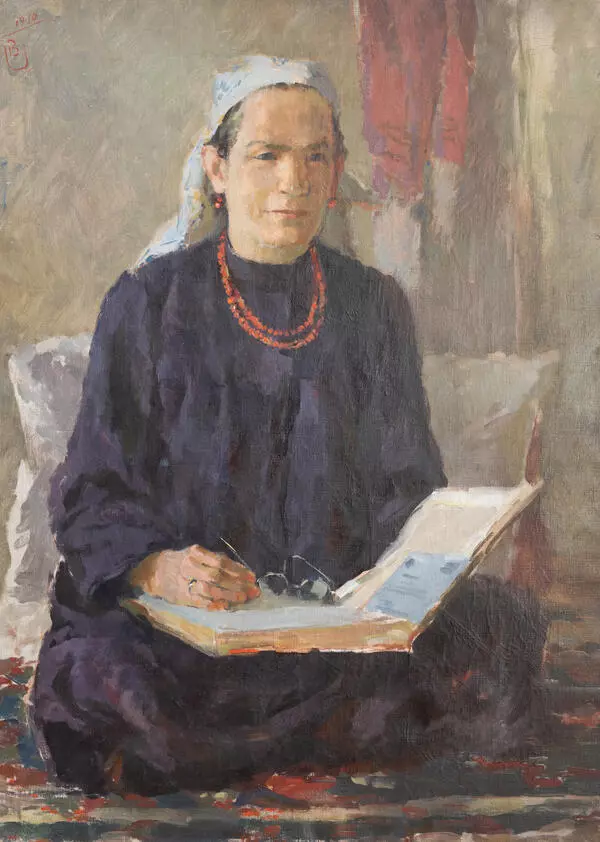Bucky Urmanche, the pioneer of Tatar art, was the first in the Soviet Tataria to proclaim national content in art. In his works, he turned to different pages of the Tatar people history.
His painting The Arrival of Ibn Fadlan in Bulgary tells about some long-ago historical events happened in the painter’s native land. In 921, Muslim Almush, Ruler of Volga Bulgaria, an ancient state in the Volga region, which occupied most of Tatarstan territory, sent an embassy to Baghdad. He sought the support of powerful Baghdad caliphate in his combat with Khazars who professed Judaism. A year later, the Baghdad caliph embassy arrived in the capital of Bulgaria. The Caliph planned to strengthen not only the influence of Islam in the countries of Eastern Europe, but also his political influence, as well as develop favorable trade relations due to alliance with the Bulgarian ruler.
Ibn Fadlan, an Arab traveler and writer, who came to the town of Bulgar as a secretary of the embassy, disclosed this information in his travel notes. His notes became very popular in the Arab world: they contained detailed descriptions of the outlandish customs and everyday life of the Bulgar and other Eastern European tribes.
This is an epic painting. The artist masterfully conveys the solemnity and grandeur of the procession, the ambassadors’ calm dignity, the restrained curiosity of inhabitants staring at overseas guests. Every element is significant here, and the bright, festive multicolored diversity attributes a joyful and solemn character to the whole painting.
The plane composition gives a feeling of proximity of the picture to the viewer.
His painting The Arrival of Ibn Fadlan in Bulgary tells about some long-ago historical events happened in the painter’s native land. In 921, Muslim Almush, Ruler of Volga Bulgaria, an ancient state in the Volga region, which occupied most of Tatarstan territory, sent an embassy to Baghdad. He sought the support of powerful Baghdad caliphate in his combat with Khazars who professed Judaism. A year later, the Baghdad caliph embassy arrived in the capital of Bulgaria. The Caliph planned to strengthen not only the influence of Islam in the countries of Eastern Europe, but also his political influence, as well as develop favorable trade relations due to alliance with the Bulgarian ruler.
Ibn Fadlan, an Arab traveler and writer, who came to the town of Bulgar as a secretary of the embassy, disclosed this information in his travel notes. His notes became very popular in the Arab world: they contained detailed descriptions of the outlandish customs and everyday life of the Bulgar and other Eastern European tribes.
This is an epic painting. The artist masterfully conveys the solemnity and grandeur of the procession, the ambassadors’ calm dignity, the restrained curiosity of inhabitants staring at overseas guests. Every element is significant here, and the bright, festive multicolored diversity attributes a joyful and solemn character to the whole painting.
The plane composition gives a feeling of proximity of the picture to the viewer.

